An overhead crane inspection checklist ensures safety and compliance by systematically evaluating crane components like wire ropes, brakes, and controls. Regular inspections prevent failures and maintain efficiency.
Importance of Regular Inspections
Regular inspections ensure the safe operation of overhead cranes, preventing equipment failure and enhancing workplace safety. They help identify potential issues before they escalate, reducing downtime and maintenance costs. Compliance with industry standards and regulations is maintained, protecting both employees and assets. A structured inspection checklist guarantees thorough evaluation of critical components, ensuring reliability and extending the crane’s operational lifespan. Consistent inspections also support proactive maintenance schedules and documentation for compliance purposes.
Overview of the Checklist
The overhead crane inspection checklist is a comprehensive guide detailing essential checks for daily, weekly, and annual inspections. It covers visual and functional assessments of components like wire ropes, hoist chains, brakes, and structural parts. The checklist ensures compliance with safety standards, documenting findings to maintain operational efficiency and safety. It includes load testing, control system verification, and examination of safety devices, providing a structured approach to identifying potential issues before they lead to equipment failure or safety risks.
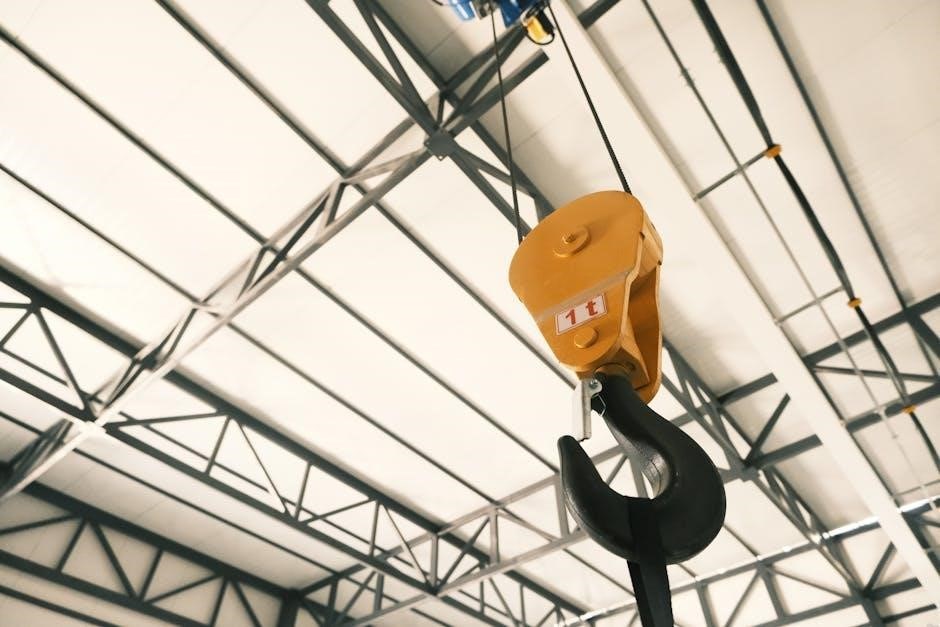
Daily Pre-Use Inspection
The daily pre-use inspection involves checking critical components such as wire ropes, hoist chains, and brakes to ensure safe and efficient crane operation.
Visual Inspection of Crane Components
The visual inspection involves examining wire ropes for damage or wear, checking hoist chains for stretch or corrosion, and ensuring all bolts and connections are secure. Operators must also inspect hooks, brakes, and limit switches for proper function. Additionally, the runway and trolley should be checked for alignment and cleanliness. Any signs of deterioration or malfunction must be documented and addressed promptly to ensure safe operation.
Functional Testing of Controls and Systems
Functional testing ensures crane controls operate smoothly and safely. Operators must test hoist, trolley, and bridge movements under load to verify proper operation. Limit switches, brakes, and emergency stops should engage correctly. Control panels and wiring must be checked for faults. Ensuring all systems function as intended guarantees safe crane operation and compliance with safety regulations. Any malfunctions detected during testing must be documented and repaired promptly.
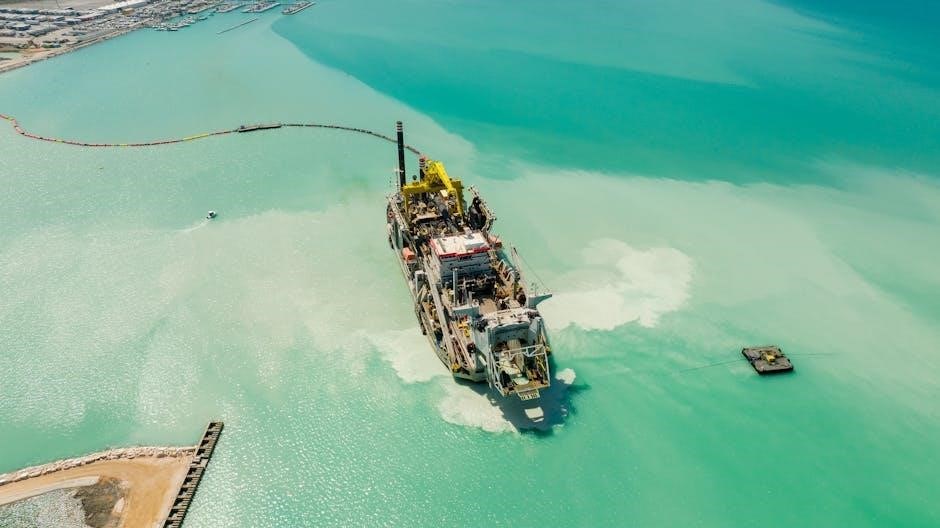
Weekly and Monthly Inspections
Weekly and monthly inspections ensure crane components like wire ropes, hoist chains, and brakes remain in safe working condition, preventing potential failures and ensuring operational reliability.
Inspecting Wire Ropes and Hoist Chains
Inspecting wire ropes and hoist chains involves checking for wear, fraying, or broken strands. Ensure proper lubrication and alignment. Replace any damaged components to prevent operational failures and ensure safety compliance. Regular checks help maintain crane efficiency and prevent downtime.
Checking Brake Systems and Limit Switches
Brake systems and limit switches are critical for crane safety. Inspect brakes for proper function, wear, and alignment. Ensure limit switches activate correctly to prevent overtravel. Test brakes under load to confirm reliable performance. Address any malfunctions promptly to avoid accidents. Properly functioning brakes and switches ensure smooth crane operation and compliance with safety standards.

Annual and Periodic Inspections
Annual and periodic inspections ensure long-term crane reliability. They include load testing, thorough examination of structural components, and verification of compliance with safety standards and regulations.
Load Testing and Operational Checks
Load testing involves verifying the crane’s lifting capacity by applying a test load, typically up to 125% of its rated capacity. Operational checks ensure all functions, including hoisting, trolley movement, and braking, perform smoothly. These tests confirm the crane’s readiness for safe operation and compliance with regulatory standards, ensuring reliability and preventing potential failures during regular use.
Detailed Examination of Structural Components
A thorough inspection of structural components involves checking girders, end trucks, and connections for signs of corrosion, wear, or misalignment. Bolts, welds, and fasteners are examined for looseness or damage. The runway and supports are also evaluated for proper alignment and stability. Any defects must be documented and addressed promptly to ensure the crane’s structural integrity and safe operation, complying with safety standards and preventing potential failures.
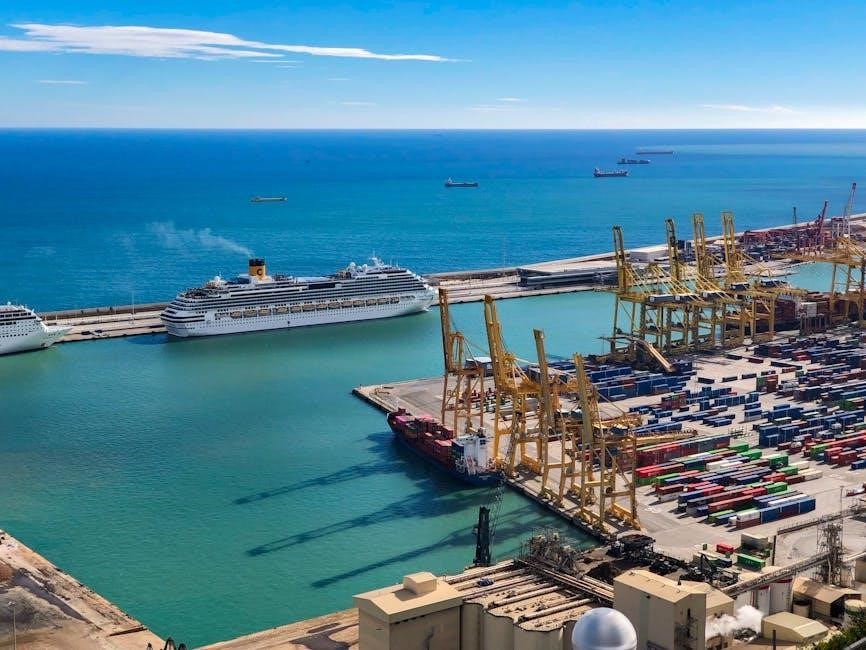
Safety Regulations and Standards
Safety regulations and standards for overhead cranes are vital for ensuring safe operations, preventing accidents, and maintaining compliance with legal and industry requirements, protecting both equipment and personnel effectively.
OSHA Requirements for Crane Safety
OSHA requires overhead cranes to undergo regular inspections to ensure safety and compliance. Daily pre-use inspections are mandatory, covering components like wire ropes, brakes, and controls. Load testing up to 125% of rated capacity is also required. Documentation of inspections and maintenance is essential for compliance. Operators must be trained, and periodic inspections must be conducted by qualified personnel to meet OSHA standards and prevent workplace accidents.
Industry Standards for Inspection Frequency
Industry standards recommend daily, weekly, and monthly inspections for overhead cranes, with annual inspections for critical components. Daily checks focus on visual and functional aspects, while weekly inspections cover wire ropes and brakes. Monthly inspections include thorough examinations of structural components. Annual inspections involve load testing and detailed operational checks. Compliance with these standards ensures safety, extends equipment life, and meets regulatory requirements, preventing potential failures and downtime.
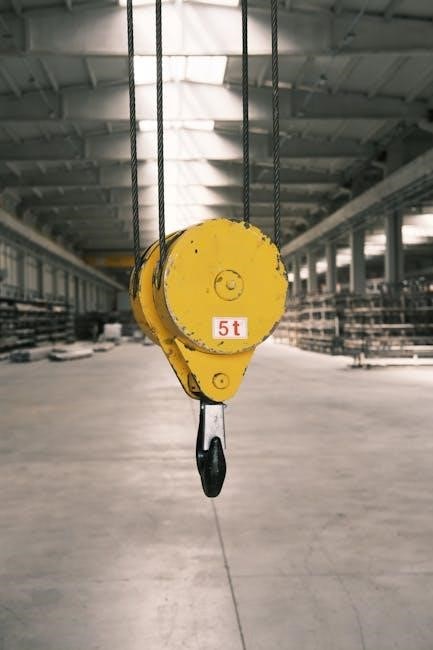
Documentation and Reporting
Complete inspection reports must document all findings, noting defects or issues. Maintain detailed records for compliance, including dates, results, and corrective actions taken;
How to Complete the Inspection Report
To complete the inspection report, list all components inspected, such as wire ropes, brakes, and controls. Note the condition of each item, marking pass or fail. Document any defects or wear. Include corrective actions needed and attach photos if necessary. Ensure the report is signed by the inspector and reviewed by a supervisor. Maintain a copy for compliance records.
Maintaining Records for Compliance
Maintain detailed records of all inspections and repairs for compliance with regulations like OSHA 1910.179. Store both digital and physical copies securely. Ensure records include dates, findings, and corrective actions. Regularly review and update records to reflect the crane’s maintenance history. Proper documentation helps in audits and ensures accountability, supporting a safe and efficient operation of overhead cranes.

Common Defects and Remedies
Common defects include wire rope wear, brake malfunctions, and hoist chain elongation. Remedies involve replacing damaged ropes, adjusting brakes, and lubricating moving parts to ensure safe operation.
Identifying Wear and Tear on Components
Wear and tear on overhead crane components like wire ropes, hoist chains, and hooks can lead to safety hazards. Signs include fraying, elongation, and surface damage. Visual inspections and measurements should be conducted to detect these issues early. Neglecting wear can result in reduced crane capacity or operational failure, emphasizing the need for regular checks and adherence to safety standards.
Addressing Safety Hazards and Failures
Identifying safety hazards and failures during inspections is critical to prevent accidents. Immediate corrective actions, such as replacing damaged components or locking out the crane, must be taken. Documentation of issues and repairs ensures accountability and compliance. Regular maintenance and operator training further mitigate risks, ensuring safe and reliable crane operation. Proactive measures help avoid downtime and potential hazards, safeguarding both equipment and personnel.
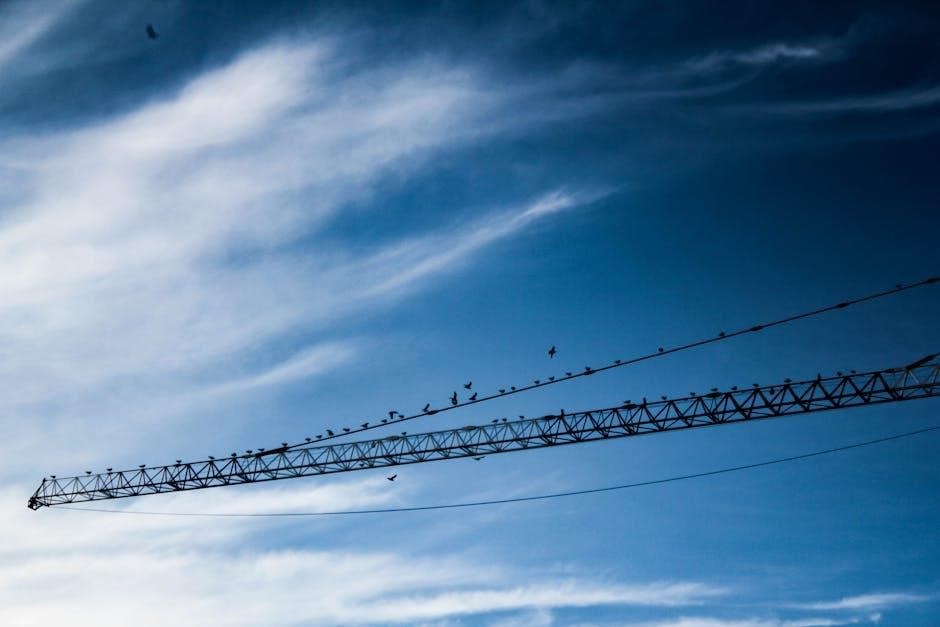
Maintenance and Repair
Regular maintenance ensures crane efficiency and safety, while prompt repairs address wear and tear. Scheduling routine checks and replacing damaged parts prevents breakdowns and extends equipment lifespan.
Scheduling Routine Maintenance
Scheduling routine maintenance is crucial for ensuring crane safety and efficiency. Regular intervals based on usage prevent unexpected malfunctions. Maintenance includes lubricating moving parts, inspecting wire ropes, and checking hoist motors. Documenting each service ensures compliance with safety standards. Timely interventions reduce downtime and extend equipment lifespan, keeping operations running smoothly and safely.
Repairing Damaged or Worn Parts
Repairing damaged or worn parts is essential to maintain crane functionality and safety. Inspections identify wear on components like wire ropes, hooks, and brakes. Replacing these parts promptly prevents critical failures. Using genuine spare parts ensures compliance with industry standards. Qualified technicians should perform repairs to guarantee reliability and safety. Proper documentation of repairs maintains operational records and supports compliance with regulatory requirements.
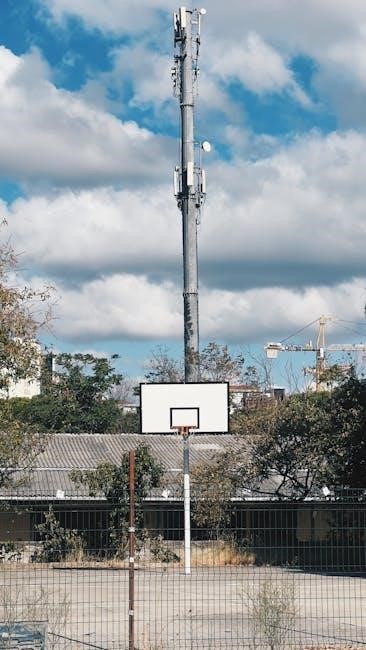
Training and Competency
Proper training ensures crane operators and inspectors understand safety regulations, inspection procedures, and equipment operation. Hands-on experience and updated certifications maintain competence and compliance with industry standards.
Operator Training Requirements
Operators must undergo comprehensive training to handle overhead cranes safely. Training covers crane components, load handling, and safety protocols. Regular recertification ensures operators stay updated with industry standards and regulations, minimizing risks and ensuring compliance. Practical assessments and theoretical knowledge are essential for certification. Employers must maintain training records for compliance with OSHA and other regulatory bodies.
Inspector Certification and Qualifications
Inspectors must hold recognized certifications, such as OSHA or ASME credentials, ensuring they meet industry standards. They should complete formal training programs and demonstrate expertise in crane mechanics and safety regulations. Regular updates and recertification are crucial to stay informed about evolving standards and technologies. Employers must verify qualifications to ensure inspections are conducted accurately and safely, maintaining compliance with legal and operational requirements.
The overhead crane inspection checklist is essential for maintaining safety and efficiency. Regular inspections prevent hazards and ensure compliance, safeguarding operations and personnel effectively.
The overhead crane inspection checklist ensures thorough evaluation of critical components. Daily checks include visual inspections of wire ropes, hoist chains, and brakes. Weekly and monthly inspections focus on lubrication, limit switches, and structural integrity. Annual inspections involve load testing and detailed examination of worn parts. Proper documentation and compliance with OSHA standards are essential for maintaining safety and operational efficiency, ensuring all potential hazards are identified and addressed promptly.
Final Thoughts on Safety and Compliance
Prioritizing safety and compliance is crucial for overhead crane operations. Adhering to OSHA standards and conducting regular inspections ensures operational efficiency and minimizes risks. Proper documentation and training are essential for maintaining a safe working environment. Neglecting these practices can lead to accidents, legal penalties, and downtime. Always ensure strict compliance with regulations to safeguard personnel, equipment, and overall productivity. A well-maintained crane is fundamental to a safe and efficient workplace.
References
- OSHA Guidelines for Overhead Crane Safety (29 CFR 1910.179)
- Overhead Crane Inspection Checklist PDF by Material Handling Systems
- ASME Standards for Crane Inspection and Maintenance
OSHA Guidelines and Regulations
OSHA requires daily and periodic inspections of overhead cranes to ensure safety and compliance. Under 29 CFR 1910.179, cranes must undergo pre-use checks, including wire ropes, brakes, and hoist chains. Documentation of inspections is mandatory, and any defects must be reported. Annual load tests are also required to verify crane capacity. Non-compliance can result in penalties and operational shutdowns, emphasizing the importance of adhering to OSHA’s strict guidelines for crane safety and maintenance.
Recommended Inspection Checklist PDFs
Several overhead crane inspection checklists are available as downloadable PDFs, offering detailed guidance on daily, weekly, and annual inspections. OSHA-compliant checklists ensure adherence to safety standards, while industry-specific templates cater to varying crane types. These PDFs typically include visual inspection criteria, functional tests, and documentation requirements. Many are free to download and serve as essential tools for maintaining crane safety and operational efficiency in industrial settings.
